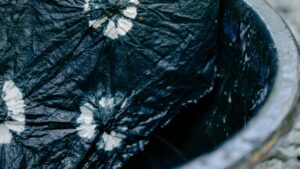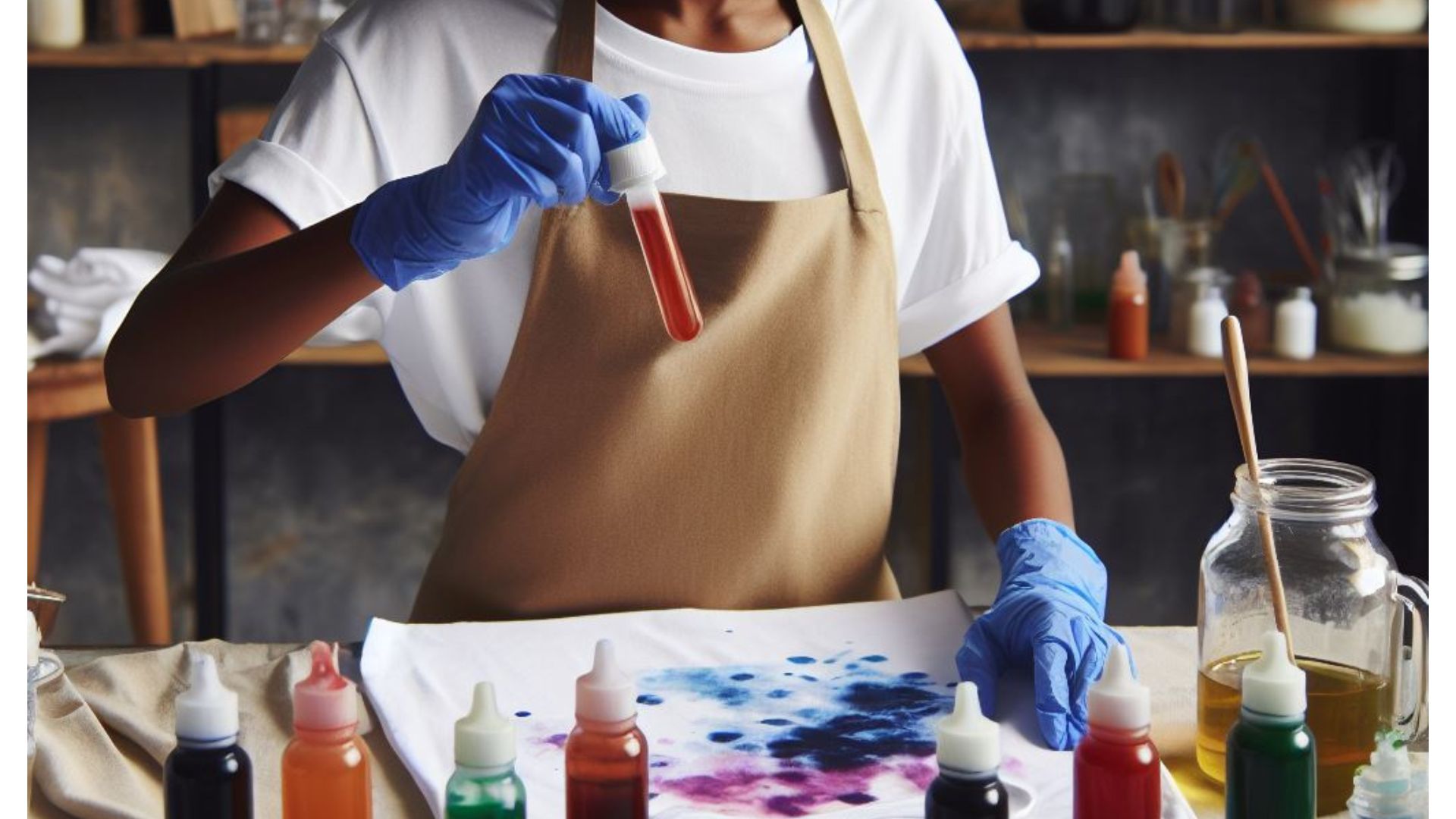Considering a fabric’s reaction to dyes is crucial when it comes to setting time. Let’s explore this in-depth to understand why it matters and how it impacts the dyeing process.
Understanding Fabric and Dye Interaction
When selecting dyes for a fabric, it’s essential to know the fabric’s composition. Different fabrics react uniquely to various types of dyes. Natural fibers like cotton, silk, wool, and linen often require different dyes and setting methods compared to synthetic fabrics such as polyester or nylon.
Impact on Setting Time
- Absorption Rate: Fabrics have varying absorption rates. Some fabrics readily absorb dyes, while others might need longer to take in the color properly. This influences the setting time as the dye needs sufficient time to penetrate the fabric fibers.
- Chemical Composition: The chemical structure of a fabric affects how it interacts with dyes. For instance, protein-based fibers like silk or wool might react differently to acid dyes compared to cellulose-based fibers like cotton.
- Heat Sensitivity: Some fabrics are more sensitive to heat, which can affect both the dyeing process and the setting time. High heat may expedite or alter the setting process, while low heat might prolong it.
Factors Affecting Setting Time
Several factors come into play when determining the appropriate setting time:
- Dye Type: Different dyes have distinct setting requirements. Reactive dyes, for example, often need heat and time to set properly, while direct dyes might require less time or different setting conditions.
- Fabric Pre-treatment: Preparing the fabric before dyeing, such as washing or treating it with mordants, can influence how the fabric receives and retains the dye, thereby impacting the setting time.
- Dyeing Method: Techniques like immersion dyeing, tie-dyeing, or screen printing can affect how the dye interacts with the fabric and consequently the required setting time.

So,…
Considering a fabric’s reaction to dyes for setting time is crucial for achieving the desired color intensity, durability, and wash-fastness. Tailoring the dyeing process to suit the fabric type ensures a successful outcome and longevity of the dyed material.
Let’s delve deeper into the intricacies of how different fabrics react to dyes and why understanding this relationship is essential in determining setting times.
Fabric Types and Dye Reactions
- Natural Fibers: Fabrics like cotton, silk, wool, and linen are natural fibers with distinct properties. Cotton tends to absorb dyes well, while silk requires specific dyes due to its protein-based composition. Wool may need different dyes and setting methods due to its unique structure, making it sensitive to certain dye types.
- Synthetic Fibers: Polyester, nylon, and other synthetic fibers often have different chemical compositions than natural fibers. Consequently, they might require specific types of dyes and different setting processes.
Setting Time Variations
- Mordants and Pretreatments: Mordants, chemicals used to treat fabrics before dyeing, can alter how dyes bond with the fabric. Depending on the mordant used and the fabric type, setting times can vary significantly.
- pH Levels: Some dyes require specific pH levels to set correctly. Fabrics that react to pH changes might need adjustments in the dyeing process, affecting the setting time.
- Temperature and Time: The interplay of heat, time, and the fabric’s reaction to dyes is crucial. Some fabrics might require longer exposure to heat for the dye to set, while others might set quicker with minimal heat.
Considerations for Different Dye Types
- Acid Dyes: Often used for protein-based fibers, acid dyes require an acidic environment for setting. Fabrics like silk and wool might need longer setting times due to the intricate bonding process involved.
- Reactive Dyes: These dyes form covalent bonds with cellulose-based fibers like cotton under specific conditions. Understanding the fabric’s reaction to these dyes is vital for achieving colorfastness and durability.
- Direct Dyes: These dyes are simpler to use but might need different setting conditions based on the fabric type. Some fabrics might absorb these dyes quickly, requiring shorter setting times, while others might need longer exposure.
Conclusion
In essence, the relationship between fabric types and dye reactions significantly influences the setting time. This understanding helps in selecting the right dyes, setting conditions, and duration for achieving vibrant, long-lasting colors on different fabrics.
It’s vital to experiment and test dyeing processes on small fabric samples before full-scale dyeing to understand how a particular fabric reacts to a specific dye type and setting conditions.
Diving into this fabric-dye dynamic allows for more informed, efficient, and successful dyeing experiences, ensuring your creations boast rich, enduring colors perfectly suited to the fabric type.
Comparison tabular
| Fabric Type | Reaction to Dyes | Setting Time | Considerations |
|---|---|---|---|
| Cotton | Absorbs dyes well | Moderate | Often requires heat for setting; reacts to mordants |
| Silk | Requires specific dyes | Longer | Sensitive to pH and heat; needs acidic environment |
| Wool | Sensitive to certain dyes | Longer | Prone to felting; reacts differently to heat |
| Linen | Absorbs dyes moderately | Moderate | Requires attention to heat and mordants |
| Polyester | Needs specific dyes | Shorter | Heat-sensitive; might require lower temperatures |
| Nylon | Requires specific dyes | Moderate | Heat-tolerant; reacts differently to different dyes |
This table outlines how various fabric types react to dyes, their typical setting times, and important considerations to bear in mind when dyeing each type of fabric. Understanding these nuances is vital for a successful dyeing process, ensuring the best color absorption and durability for different fabrics.
Wrapping up
Understanding how different fabrics react to dyes and considering their setting times is the cornerstone of a successful dyeing journey. Each fabric type possesses unique characteristics that influence the dyeing process, from absorption rates to sensitivity to heat and pH levels.
By recognizing these intricacies, you’re better equipped to choose the right dyes, setting methods, and durations, ensuring vibrant, long-lasting colors on your fabrics. Remember, experimentation and testing on small samples can provide invaluable insights before undertaking larger dyeing projects.
This understanding empowers you to unleash your creativity while achieving exceptional results, tailored perfectly to the fabric at hand. Embrace this knowledge and embark on your dyeing adventures, confident in your ability to create stunning, enduring colors on every fabric type you encounter. Happy dyeing.

For over a decade, I’ve been Mike, an artist, crafter, and designer deeply immersed in the Croc world. I thrive on crafting unique, size-inclusive patterns, fostering creativity, and sharing them on ktforum.com. My designs aim to ignite your creative spark and delight you, ensuring clarity and ease of use through rigorous testing. Join me in expressing your creative flair and showcasing your craft with joy.
Related Posts
- Should you consider the dye's brand when determining setting duration?
Absolutely. The brand of dye you use can indeed influence the duration needed for setting.…
- Understanding Fabric and Setting Time
Setting time, the duration required for a fabric to retain certain alterations or treatments, varies…
- Should I take into account the fabric's pre-treatment for setting time
Absolutely, considering the pre-treatment of fabric before setting time is crucial. Whether you're a DIY…
- Understanding the Difference in Setting Time Between Liquid and Powder Dyes
Dyeing fabrics or materials is a creative and engaging process that allows for personal expression.…

